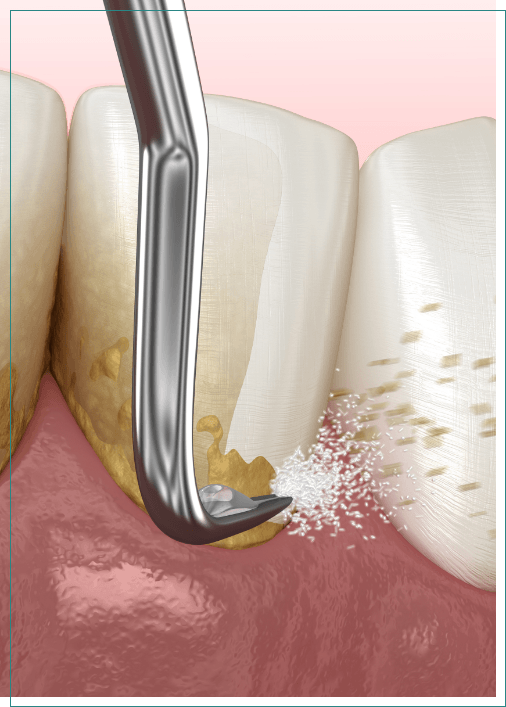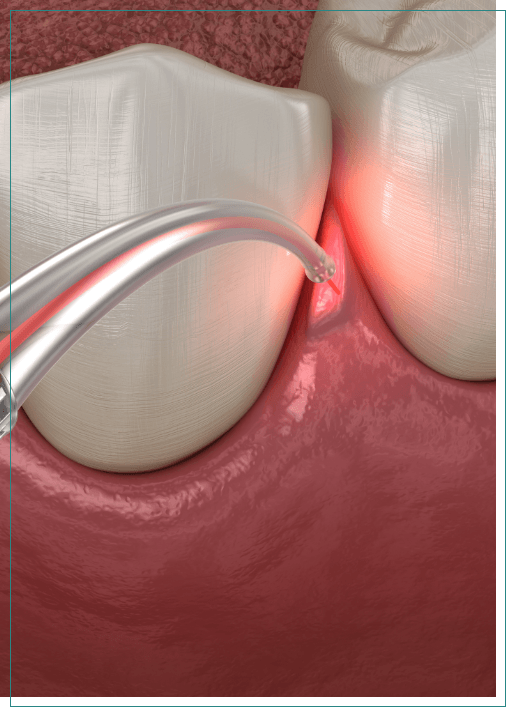Gum Disease Treatment – Boise, ID
Stopping Gum Disease in Its Tracks
Gum disease is one of the most common oral health problems in the world, estimated to impact one out of every two adults. Fortunately, despite being a common dental concern, our team is able to help you tackle the symptoms and control the infection with routine gum disease treatments like deep cleanings in Boise. If you notice that your gums bleed whenever you brush or floss or you have chronic bad breath, schedule an examination with our team at Southwest Dental Arts today!
Why Choose Southwest Dental Arts for Gum Disease Treatment?
- Safe & Gentle Gum Disease Treatment
- State-of-the-Art Laser Technology
- Skilled & Experienced Dental Hygienist
What is Gum Disease?

Gum disease, also known as periodontal disease, is a prevalent oral infection that affects most Americans, and though it’s called “gum” disease, it can lead to a wide range of consequential issues that affect both your oral and overall health. It’s even been linked to an increased risk of strokes, diabetes, and heart disease.
There are two stages of gum disease: gingivitis, which is the earliest stage, and periodontitis, which is advanced gum disease. Some of the leading causes of this common dental issue are poor oral hygiene habits, smoking and tobacco use, and plaque and tartar build-up. In some cases, genetics can even put people at a higher risk of developing gum disease.
Symptoms of Gum Disease

During each preventive dentistry visit, we’ll examine your gums and look for any problematic symptoms. If signs of gum disease are detected, we’ll quickly work to address the issue. Helping you maintain a problem-free smile moving forward is our top priority, and stopping gum disease in its tracks plays a large part in this.
Some of the symptoms of gum disease that we’ll keep an eye out for during your routine checkups and cleanings include:
- Purple-ish, swollen, or overly red gums.
- Bleeding that occurs whenever you brush or floss.
- Teeth that appear longer due to gum recession.
- A change in your bite and the way your teeth fit together.
- Chronic bad breath, also known as halitosis.
How Do We Treat Gum Disease?

Based on our findings during your routine checkup, our team will walk you through all of the treatment options we recommend. In some cases, that could be scaling and root planing, also known as a deep cleaning, on its own, or laser periodontal treatment as well.
Scaling & Root Planing

If gum disease is allowed to progress past the early stages, which occurs when plaque, bacteria, and calculus (tartar) collect in the deep pockets of the teeth, it might require a more advanced set of procedures known as scaling and root planing to be treated. This process involves numbing the soft gum tissue to ensure your comfort before we utilize special instruments to remove all of the plaque and tartar that has built up beneath the gum line. This deep cleaning can effectively halt the progression of the disease.
Laser Periodontal Treatment

At Southwest Dental Arts, we’re proud to utilize state-of-the-art technology to assist with periodontal therapy, including laser dentistry. The soft tissue laser allows us to remove infected portions of gum tissue from the mouth and encourages the growth of new, healthy tissues. This also assists with bacterial reduction and decontamination—and the best part is that it’s a safe, comfortable, and conservative process! There’s very minimal bleeding and swelling involved, and many patients feel so at ease during this process that local anesthesia is rarely required.
